Discussion
To try and make sense of the
role of the 8th Century Prophets it is important to gauge the broader picture under
which they operated.
Israel had since the time of
Solomon been reduced to two communities living estranged from each other. It
had come about, that, due to the oppressive rule of Solomon followed by that of
Rehoboam, that the people had enthroned Jeroboam I as king of Israel. What followed was times of either intense rivalry and hatred for each other or
peaceful Co-existence. However it was during these years that due to the
general political scene both kingdoms prospered to an extent not seen other
than the reign of Solomon. With prosperity come further oppression of that part
of the community that was least able to defend itself in the courts.
The moral, religious and social
structure of both kingdoms went into a spiral of decline as the books of Amos,
Isaiah, Hosea and Micah attest.
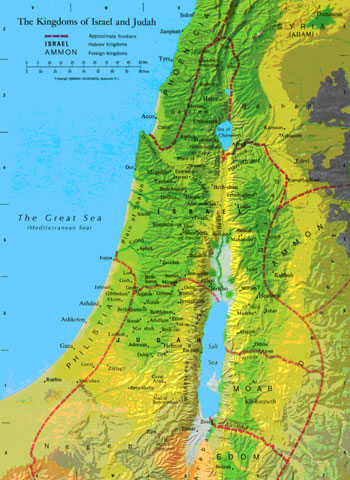 For Anderson then, the prophets
of the eighth century were commentators, who under the view of the Eternal God
interpreted events of their day by looking back at crucial experiences of the
past.
They were concerned with relationships, particularly with regard to the
covenant. As they came bringing a message from Yahweh to his people, they were
themselves products of the society in which they lived. They were concerned
with the manner in which the people of God had failed to continue in a covenant
relationship with God, rather resorting to oppression of the poor, as they
watched the way of life that had existed while they had been yet a group of
desert tribes pass away.
For Anderson then, the prophets
of the eighth century were commentators, who under the view of the Eternal God
interpreted events of their day by looking back at crucial experiences of the
past.
They were concerned with relationships, particularly with regard to the
covenant. As they came bringing a message from Yahweh to his people, they were
themselves products of the society in which they lived. They were concerned
with the manner in which the people of God had failed to continue in a covenant
relationship with God, rather resorting to oppression of the poor, as they
watched the way of life that had existed while they had been yet a group of
desert tribes pass away.
It was this moving away from the
desert life to a more organised developed civilisation, and the gradual
assimilation of the canaanite ethos of religion and social structure that set
the stage for the gross excesses that are judged against by the prophets.
In this period of Israel’s history the population was made up of free Israelites, slaves, resident aliens and
the Canaanites.
The bulk of the people were farmers, fruit growers, herdsmen, small merchants,
artisans, unskilled wage labourers and slaves. A smaller portion of the
community were either professional priests, wealthy land owners or merchants.
This latter group lived in a style of luxury which was in direct contrast to
the poverty of the general population.
The nobodies referred to by Anderson are those who had no real rights under the laws of Israel. Those responsible for
enacting legislation in Judah and in Israel, had put into effect laws which
oppressed three groups in society. The widows, the orphans and the poor.
Likewise in relation to these
groups within the society of both Judah and Israel, the prophets each looked at
how the covenant has within it, the expectation that people would treat their
neighbour with Justice and Righteousness. A reflection of the character of God
himself.
The words, “mišpãt” and “sedãqãh” are central to what the prophets
had to say about the nobodies or powerless of their time.
Taking each word in turn there can be demonstrated a link between these words
and the prophets concern for the nobodies of their society.
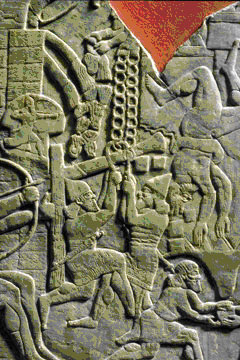 Firstly, taking the word
“mišpãt”, this is derived from the verb “shãpat”, which means to judge or
govern.
The primary sense being to exercise the process of government, hence “mišpãt”
is what those who do the judging should be supplying the community “Justice”.
There is a forensic tone imputed to the use of this word and it is commonly
used in conjunction with the primary attributes of God. Isaiah 30:18 pick
up this tone by saying, “because Jehovah is the God of justice”. Limburg rightly sees a dynamic quality connected to the prophetic us of Justice.
“One does justice” is how he puts it, the people of the eighth century were
failing to acts on behalf of the oppressed, the orphans and the widows.
Political leaders of both Jerusalem and Samaria had forgotten to assure
“mišpãt” in the gate.
Firstly, taking the word
“mišpãt”, this is derived from the verb “shãpat”, which means to judge or
govern.
The primary sense being to exercise the process of government, hence “mišpãt”
is what those who do the judging should be supplying the community “Justice”.
There is a forensic tone imputed to the use of this word and it is commonly
used in conjunction with the primary attributes of God. Isaiah 30:18 pick
up this tone by saying, “because Jehovah is the God of justice”. Limburg rightly sees a dynamic quality connected to the prophetic us of Justice.
“One does justice” is how he puts it, the people of the eighth century were
failing to acts on behalf of the oppressed, the orphans and the widows.
Political leaders of both Jerusalem and Samaria had forgotten to assure
“mišpãt” in the gate.
The gate, the place where justice
should have been found was no longer what it should have been. Micah 1:9 talks, of how, “her wound is incurable. It has come to Judah; it has reached to the
gate of my people, to Jerusalem”, and he is backed up by corresponding verses
in both Amos and Isaiah (Amos 1:5; Amos 5:10-12; Amos 5:15; Isa 28:6; Isa 29:21). The very place where justice should have been found was devoid of it.
Anderson points out that a
passion for social justice was shared by all of the eighth century prophets.
Like many authors he exegetes the passage in Isaiah referred to as the “Song of
the Vineyard” and exposes the theme of justice and righteousness.
This theme can be isolated in all the books of the eighth century prophets
(Amos 5:7; Amos 5:24, Micah 3:1-2; Micah 6:8, Hosea 2:19).
Secondly, it can be seen from the
above discussion that the complement to “mišpãt” is “sedãqãh” (righteousness). It stems from
the denominative verb “sàdèq”, be just, or be righteous. The earliest use of
the noun “sedãqãh” occurred in
relation to the function of the judges.
When people follow God, righteousness is said to dwell in the city (Isa 1:21),
hence to have a city ruled by greed and wickedness is to pervert righteousness.
This is of prime importance to the prophets because as has been posited earlier
they all call for justice to be complemented by righteousness. The forensic act
involved in righteousness applies to equality for all, both rich and poor. It
is evident from the text that this was not the case (Isa 1:15-21; Isa 3:14-15;
Isa 5:8-11; Isa 10:1-2; Hosea 10:12-13; Micah 3:1-2, Micah 8-9; Micah 6:8; Amos 5:7,
Amos 5:24).
Righteousness then as Hosea portrays, can only be achieved by plowing up fallow
ground and sowing in righteousness and reaping in mercy (Hos 10:12). Finally
there is a viewpoint that the eighth century prophets use “sedãqãh” in an ethical sense.
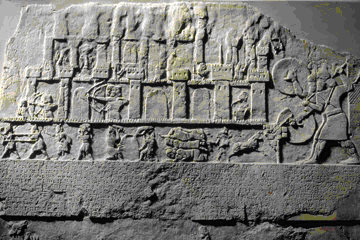 It was obvious to the prophets
that the nobodies of the society had been forgotten by the society in general
and as passages like Amos 5:11, Micah 2:2 and Isaiah 5:8 point out the rich had
trampled upon the poor, coveting their fields, evicting the widows and their
children, selling them into slavery. The oppressed having mortgaged their homes
found themselves removed to the street. This then was the economic life of Israel and Judah during the eighth century, riddled with abuses which the prophets saw and condemned.
It was obvious to the prophets
that the nobodies of the society had been forgotten by the society in general
and as passages like Amos 5:11, Micah 2:2 and Isaiah 5:8 point out the rich had
trampled upon the poor, coveting their fields, evicting the widows and their
children, selling them into slavery. The oppressed having mortgaged their homes
found themselves removed to the street. This then was the economic life of Israel and Judah during the eighth century, riddled with abuses which the prophets saw and condemned.
Scott points out that, “Israel’s national conscience had been formed by the tradition of Moses and the deliverance from Egypt”. This set the background for a covenant with God which he says “prescribed the
“mišpãt” of his people”. As the creator of Israel any life that Israel may have had lay within the righteousness of God. This has the result of an
expectation from Yahweh that a like righteousness would be visible among his
people.
To gain a better understanding of
how each of the prophets of this time expressed this concern it is important
then to see how they each reacted to the situation as they found it.
Starting with the book of Amos,
it is evident that he like the other eighth century prophets, was ultimately
concerned with the lost and the nobodies of his society. The flotsam and jetsam
of a world in which crimes against humanity was rife (Amos 1:1;2:11). The
opening oracles are all joined together by a common thread, a thread of social
and criminal injustice towards humanity. J. Hyatt believes that, Amos saw the
terms of the covenant as moral.
This is expressed in the manner in which Amos exposes crimes against humanity.
What greater ethical dilemma is there than one which destroys firstly
humankind’s relationship with God, then their relationship with fellow humans,
and finally humankind’s relationship with nature. All of these are in evidence
in the book of Amos.
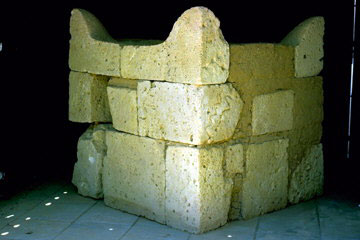 Likewise, Hyatt, in summarising
the book of Amos says that because of the sin, especially the social sin of
injustice, the Day of the Lord is about to be inaugurated. So
bad is the sin in the land that even the awaited Day of Yahweh, a time when the
righteous will be vindicated, is now to be turned against the nation as a whole
as a instrument of judgment.
Likewise, Hyatt, in summarising
the book of Amos says that because of the sin, especially the social sin of
injustice, the Day of the Lord is about to be inaugurated. So
bad is the sin in the land that even the awaited Day of Yahweh, a time when the
righteous will be vindicated, is now to be turned against the nation as a whole
as a instrument of judgment.
Tied up here is the concept, as
mentioned earlier, of God’s justice. Amos continually stresses the justice God
has expressed in his dealings with Israel, and how God demands justice from his
people, yet this threat of judgment looms like a dark cloud over Israel. Twice Amos asks the Lord to forgive, twice the Lord postponed his judgment, however
because the injustices perpetrated on the oppressed and the nobodies of Israel violated the very fundamental idea of what constituted the people of God they were
not to be spared. Again J. Hyatt puts this in terms that leave little room to
be elaborated on, “When the rich oppress the poor, or merchants cheat their
customers, then the fundamental idea of a covenant people is violated”.
Mays points out that for Amos,
“the crucial manifestation of evil in Israel is the oppression of the weak”. It
does not matter to which part of Amos one turns they are continually confronted
with the manifest evil that is used against this lower socio-economic group.
To say that Amos was for the
nobodies of Israel’s society is a correct understanding of the book, however it
must not be lost sight of that he was also concerned with the relationship of
the people and the land, and the poor state of the cultic worship. This latter
has caused many to question if or not he may have been against the idea of
cultic worship all together.
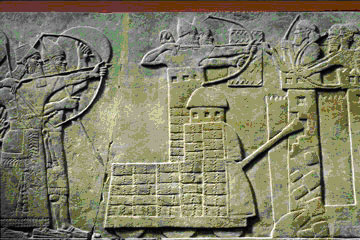 It has been mentioned earlier
also about the use of the words justice and righteousness, these are favourite
terms of Amos, used when ever he is talking about what Yahweh requires of
Israel in relation to the weak.
God will not only destroy the people but also their strongholds in which they
store their loot. Strongholds is another theme that runs through Amos and
appears in Amos 1:4,7,10,12,14; 2:2,5; 3:9,10,11; 6:8. These places of stored
wealth and Amos’s derogatory references to them only heighten the idea that
wealth can corrupt, just as poverty can degrade.
Nolan Howington writes that Amos with penetrating insight, “observed that one
of the moral perils of wealth is in attendant loss of sensitivity, a
callousness of soul”.
It has been mentioned earlier
also about the use of the words justice and righteousness, these are favourite
terms of Amos, used when ever he is talking about what Yahweh requires of
Israel in relation to the weak.
God will not only destroy the people but also their strongholds in which they
store their loot. Strongholds is another theme that runs through Amos and
appears in Amos 1:4,7,10,12,14; 2:2,5; 3:9,10,11; 6:8. These places of stored
wealth and Amos’s derogatory references to them only heighten the idea that
wealth can corrupt, just as poverty can degrade.
Nolan Howington writes that Amos with penetrating insight, “observed that one
of the moral perils of wealth is in attendant loss of sensitivity, a
callousness of soul”.
Secondly, Hosea who was a native
of northern Israel found himself following in the footsteps of Amos. Unlike
Amos (a stern austere shepherd) he was seen as tender hearted, full of
compassion and pity. Winward puts it quite adequately, “he loved the people he
was compelled to condemn”.
Hosea expresses his concern for
the people by the use of his own relationship with Gomer, for, from within his
own pain he reveals his heart. Through his suffering a window is opened upon
the problems of relationships within the community. Yahweh uses the love of
Hosea to reveal his own love, and whether or not the chapters on Hosea
relationship with Gomer are taken literally of allegorically the
theme of the book Hosea is the love of God as expressed in the covenant.
Unlike the other three eighth
century prophets Hosea does not use the terms justice and righteousness with
the same vigour. Instead he focuses on terms like “chesed” steadfast love,
faithfulness and knowledge of God.
It is through the use of these terms that he shows the breakdown in society. He
talks about bringing and indictment (Hosea 4:1) which is a legal term because there
is no faithfulness or loyalty or knowledge of God. Swearing, lying, murder,
stealing and adultery have broken out(Hosea 4:2). The people are greedy in their
iniquity, they have plowed wickedness and reaped injustice (Hosea 10:13) and all your
fortresses will be destroyed.
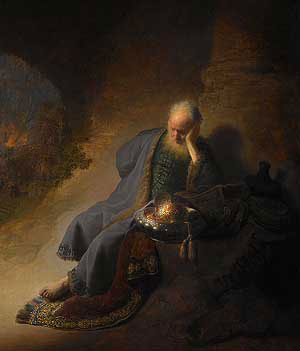 It is obvious that the people had
gone away from Yahweh, they had broken his covenant. Thus it is the breaking of
the covenant that has bought the nation to it’s present predicament. The
deliberate nature of the peoples disobedience is obvious from, Hosea 4:16 where Israel is said to be stubborn and
Hosea 5:11 where they are said to be deliberate in their
actions. According to Anderson, “Hosea does not throw the spotlight on social
injustice the same way as Amos or Isaiah do”,
yet one cannot say that he is not for the nobodies of society because all the
conditions against which here prophecies are the very conditions which produce
the social climate where the rich get richer and the poor get poorer.
It is obvious that the people had
gone away from Yahweh, they had broken his covenant. Thus it is the breaking of
the covenant that has bought the nation to it’s present predicament. The
deliberate nature of the peoples disobedience is obvious from, Hosea 4:16 where Israel is said to be stubborn and
Hosea 5:11 where they are said to be deliberate in their
actions. According to Anderson, “Hosea does not throw the spotlight on social
injustice the same way as Amos or Isaiah do”,
yet one cannot say that he is not for the nobodies of society because all the
conditions against which here prophecies are the very conditions which produce
the social climate where the rich get richer and the poor get poorer.
Thirdly, Isaiah. Isaiah unlike
the other prophets of this era was not a peripheral voice, rather he was
directly involved with the government (official role unknown). He was on
occasion summoned by the King who recognised his status as a messenger of
Yahweh. From the narratives of Isaiah it can be seen that he was an important
figure in Jerusalem,
never the less this did not stop him from delivering oracles to regulate social
change.
By reaffirming traditional values
and religious views he became an instrument of Yahweh rather than an instrument
of the King.
Apart from the other themes found
in Isaiah, there is what Stephen Winward calls the finest parable of Social
Justice in the Old Testament.
This is of course the Song of the Vineyard that has been mentioned earlier. It
is here that theme of “mišpãt” Justice and “sedãqãh” Righteousness reaches its zenith
in Isaiah.
In the form of a popular love
song it is the story of a friend who has made a vineyard. Having lovingly
prepared the ground and planted the choicest vines he waits the harvest.
However at harvest he is confronted by nothing but wild grapes and the question
is asked what will the owner do with the vineyard. Unless it is utterly
destroyed it will only become a thorn choked wasteland.
 Isaiah here has set the scene
(not unlike Amos who first bought oracles against the nations and Judah), then
when having his audience hanging on his every word dealt his death blow. It was
the people of Judah who were the vineyard, a vineyard on which Yahweh had
tenderly bestowed his finest craft as a vine keeper. However like Jesus some
seven centuries later he came expecting to find fruit but was confronted with
no fruit at all. Instead he found injustice and not “mišpãt”, he expected to
find righteousness and instead he heard a cry from the oppressed.
Winward sums up the parable with, “To the loving care of God the nation has
responded with violence and oppression”.
Like the time of Amos the cultic activity was, all be it perverted, in full
swing, and it is not unlikely that this very parable was delivered within the
precincts of the temple.
Isaiah here has set the scene
(not unlike Amos who first bought oracles against the nations and Judah), then
when having his audience hanging on his every word dealt his death blow. It was
the people of Judah who were the vineyard, a vineyard on which Yahweh had
tenderly bestowed his finest craft as a vine keeper. However like Jesus some
seven centuries later he came expecting to find fruit but was confronted with
no fruit at all. Instead he found injustice and not “mišpãt”, he expected to
find righteousness and instead he heard a cry from the oppressed.
Winward sums up the parable with, “To the loving care of God the nation has
responded with violence and oppression”.
Like the time of Amos the cultic activity was, all be it perverted, in full
swing, and it is not unlikely that this very parable was delivered within the
precincts of the temple.
Isaiah was telling the people
that if they wanted to do what was acceptable to Yahweh, then they needed to
cleanse themselves and put away injustice and unrighteousness. The strength of
his conviction for the need for social change can be seen from his use of these
two words. Below is a summary of the verses they can be found in highlighting
again his concern for the people and their relationships.
“mišpãt” Justice.
Isa 1:17,21,27; 3:14; 4:4; Isa 5:7,16; 9:7; 10:2; 16:5; Isa 26:8,9;
28:6,17,26; 30:18.
“sedãqãh”
Righteousness.
Isa 1:27; 5:7,16,23; Isa 9:7; 10:22; 28:17, Isa 32:16,17; 33:5,15.
Isaiah uses the form of a
covenant lawsuit to try and persuade Judah to avert the path of it’s sister Israel and to try to bring about a change of values. He makes it plain at the outset that
the reason the people will be judged is because they have failed to live up to
the expectation of Yahweh’s covenant, with special reference to social,
religious and political issues.
It cannot be forgotten that Isaiah to, like Amos had a sense of an ethical
dilemma for the people. This shows in their abuse of the weaker class, a
primary concern for satisfying oneself and a manipulation of the environment.
Oswalt writes that Isaiah’s “whole pattern of thought has been affected by the
tremendous contrast between the greatness of God and the corruption of Humanity.
Fourthly, from the book of Micah
(a contemporary of Isaiah) it can be seen that he was concerned primarily with
the needs of the people. The characteristics of his ministry are, strict
morality, unbending devotion to justice, and sympathy with the poor.
Chapter two verses five to nine talks about how those greedy for land will lose
title to that land, and how the persecutors of women will see their own
children deprived of their right to belong to the people of the Lord. Micah
expresses a sense of outrage for the dispossessed as even the oppressed will
have his heritage taken from him.
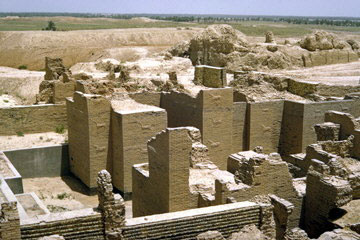 Micah attacked the establishment
for abandoning divinely ordained standards in favour of self interest, to the
point of neglecting and actively mistreating those who made up the class of the
under privileged.
For Micah God was the God of the covenant, a God whose justice and
righteousness was unparallel in history. It was the failure of this justice and
righteousness to be reflected in those who purportedly shared in that covenant
that caused him to stand out against his environment as a courageous,
passionate champion for justice (Micah 3:8).
Micah saw that it necessary for the people to be reminded of the implications
of covenant disloyalty. It was to be through his reminding them that he pursued
justice for the victims of the power structure of society.
Micah attacked the establishment
for abandoning divinely ordained standards in favour of self interest, to the
point of neglecting and actively mistreating those who made up the class of the
under privileged.
For Micah God was the God of the covenant, a God whose justice and
righteousness was unparallel in history. It was the failure of this justice and
righteousness to be reflected in those who purportedly shared in that covenant
that caused him to stand out against his environment as a courageous,
passionate champion for justice (Micah 3:8).
Micah saw that it necessary for the people to be reminded of the implications
of covenant disloyalty. It was to be through his reminding them that he pursued
justice for the victims of the power structure of society.
Micah made it plain that those
who had misappropriated the ancestral property of others and those who had
turned a deaf ear to their appeals for help would loose their own rights and
they would find God turning a deaf ear to their appeals before him (Micah 2:2-10;
3:4-10). It is evident from the book of Micah that a burgeoning wealthy class was
becoming richer and an expanding poor class was becoming poorer.
Micah was becoming as mentioned earlier a champion against the injustices of
the ruling classes.
It is the theme of Justice (mišpãt) and Righteousness (sedãqãh) that is continually played out
throughout the book of Micah. One could even say that his doctrine of the
remnant was placed by God to give the people hope. It is in this manner that
God, through Micah expresses his concern for all people and for relationships.
It will take the impoverishment of all to bring about the change needed to once
again bring the lost and powerless back within the bounds of the covenant
relationship.
Conclusion
It can be said then in
conclusion, that the prophets of the eighth century were concerned primarily
for the people and especially for the victims of the power structure of
society. They each in their own way fought against the unethical lifestyle of
the people of Yahweh and sought to bring about a reversal of the ethical
decline. They sort to right the relationship the people had with God, with
themselves and finally with their environment. It is when all three of these
things are present that the covenant relationship is complete.